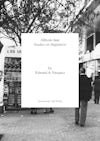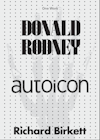Content
Andy Warhol’s Blow Job, made at the Factory in New York in 1964, is a masterpiece of the complexities of voyeurism and duration. The 36-minute film shows a young man apparently receiving oral sex, though the viewer only ever sees his head and shoulders – leaving the person performing the act in our imagination. Sometimes the man looks bored, sometimes as if he is thinking, sometimes as if he is aware of the camera, sometimes as if he is not. What might have been pornographic becomes an extended examination of the passing of time and the materiality of film. The silent, black-and-white film is exemplary of Warhol’s works produced during the early 1960s, alongside such films as Sleep, Empire, Harlot and Couch.
In this important book, the influential film-maker and writer Peter Gidal shows how Blow Job is a film about film, about time and also about mortality. Gidal places Blow Job within a history of works by artists, including Duchamp and Velázquez, that directly affect the viewer, enacting a pattern of recognition and loss that constitutes the experience of perception itself.
Gidal’s book is a richly textured, deeply felt consideration of not only Blow Job, but also Warhol’s work as a whole, putting both the film and its maker into context within our contemporary culture, while acknowledging the artist’s debt to the preeminent visual stylists of earlier generations and cultural eras. As such, it is a significant addition to the canon of work on Warhol’s melancholy films, and a remarkable accomplishment of critical and theoretical synthesis. — Winston Wheeler Dixon, Screening the Past, August 2009




